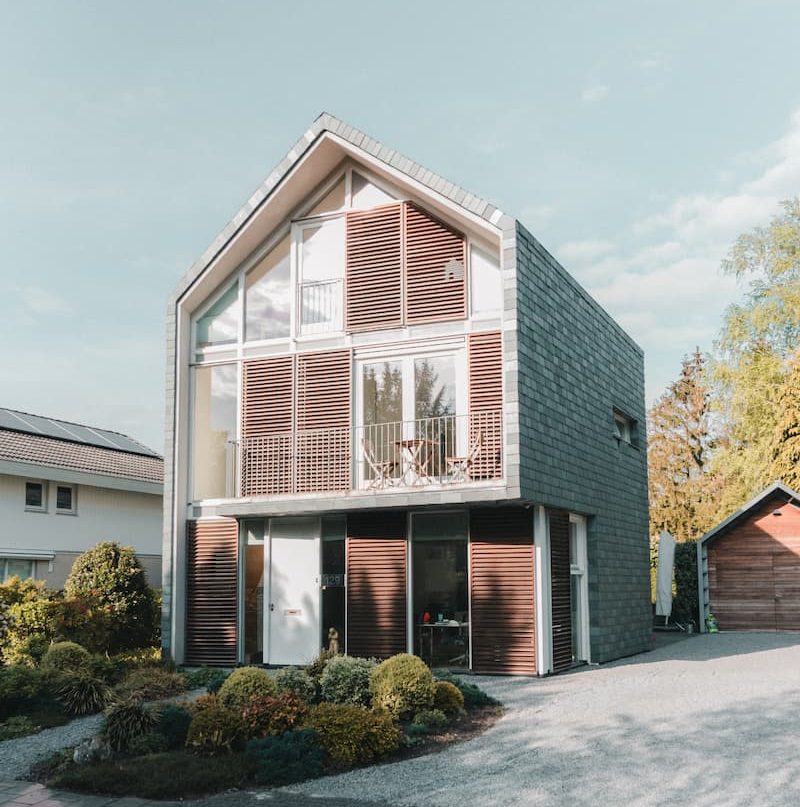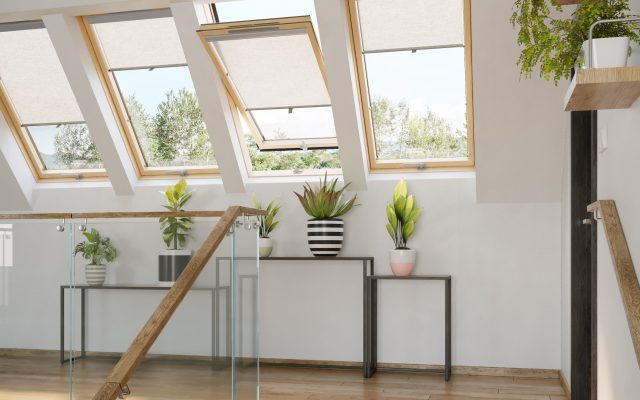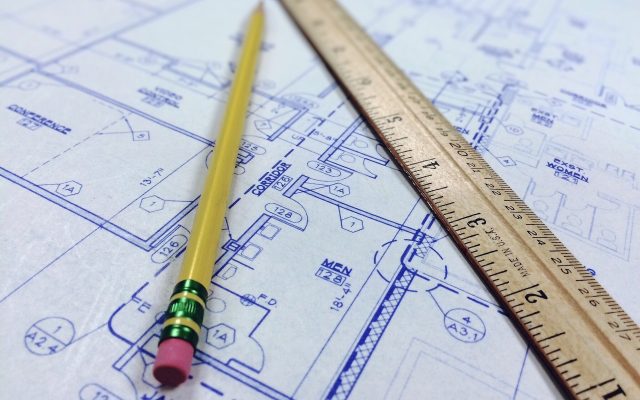Houses are getting more expensive to buy, and even when you can afford one, you’re limited from a design standpoint to what developers have chosen. A route you could go down is commissioning a self-build for your new home. A self-build will allow you to build your own home from the ground up so that you can tailor it to both your design preferences and your budget.
Key Self-Build Benefits
- Save 20-30% compared to buying a pre-built home
- Complete control over design and specifications
- Higher quality materials and construction standards
- Better energy efficiency and sustainability options
- Potential for significant property value appreciation
What is a Self-Build?
A self-build is where someone commissions a house to be built from scratch, on land that they own. With a self-build, you have the option to have complete control over the design and build process, meaning you can choose things like the layout of the building and the materials it’s made from.
Expert Tip
According to the National Custom and Self Build Association (NaCSBA), successful self-builders typically save 15-30% compared to buying a comparable new-build home. In 2023, the average self-build project cost £290,000 excluding land.
Most people tend to work with architects, architectural technologists, or professional design and building teams.
Unless you have experience in any of these areas, working with professionals means you can build your dream home, while still working within building regulations and maintaining structural necessities.

Types of Self-Build
When it comes to building your own home, there are two routes that you can go down, the “self-build” route or the “custom-build” route. Both have their pros and cons, and depending on your situation, one might suit you better than the other. They both have differing levels of involvement throughout the design and construction process, which will be a factor in which route you want to take.
Self-Build
Opting to go down the self-build route for your new home means you will need to be much more involved in every aspect of the building process. Everything from the design stage, and choosing the right trades people, to choosing the finishings and sorting out legal documentation.
Benefits of Pure Self-Build
- Maximum control over design and specifications
- Potential for greatest cost savings
- Freedom to choose all contractors and suppliers
- Flexibility to make changes during the build
You don’t necessarily have to organise everything yourself when choosing to self-build, some people will decide that hiring an experienced project manager will be beneficial to them, taking some of the stress away from themselves.
The biggest benefit of choosing to self-build is that you have complete control and input over creating your home. Effectively, as long as your budget allows for it and that it meets building regulations, you can build your dream home.
Custom build
Custom-builds are similar to self-builds in the fact that you get to build your home from scratch on your own land. The key difference is that you work with a developer who will help to oversee and manage the project for you. This includes:
- Finding a plot of land, if you don’t have one
- Helping create a bespoke design
- Organising planning permission
- Organising services to the property (like utilities and roads)
- Project management
Custom Build vs. Self-Build: Cost Comparison
| Aspect | Custom Build | Self-Build |
|---|---|---|
| Developer Fees | 10-15% of project cost | No developer fees |
| Initial Costs | Higher upfront costs | More flexible payment schedule |
| Overall Savings Potential | 10-15% vs market value | 20-30% vs market value |
One of the downsides of choosing to go for a custom-build home rather than a self-build, is that it will be more expensive because you’ll be paying the developers who are helping to oversee and manage the project.
Self-Build Routes
So, you’re building your own home and have decided to choose the self-build option. Before you get started, there are several self-build routes you can go down, depending on the level of involvement you want in the build.

Package Company
Using a package company is one of the more hands-off approaches you can take, and will be similar to a custom-build route. A package company will help to guide you through the design and build process, considering your requirements and preferences.
Package Company Benefits
- Single point of contact for entire project
- Streamlined planning and approval process
- Guaranteed costs and timelines
- Reduced administrative burden
As the name suggests, they’ll bundle a lot of the services needed in one package, such as architects/designers and building teams. The level of management that you have during the build will vary depending on the company and the terms of the contract you sign with them.
Part of this service may involve having to compromise on certain elements of your new home, depending on how viable it is for the company to deliver.
Architect + Contractor/Project Manager
Opting to hire an architect, alongside a project manager, is the ‘middle’ level of involvement you can have in a self-build project. You’ll work with the architect and project manager to design and plan the self-build, but you’ll have to either be more involved in the physical work or hire a team of contractors to help with it.
Key Responsibilities When Working with Architect and Project Manager
- Finding and evaluating suitable plots
- Securing planning permission
- Coordinating utility connections
- Selecting and managing contractors
- Budget management and cost control
Unlike using a package company, you’ll have a lot more to organise yourself. This could potentially include things like finding a plot, sorting out planning permission and services for the property, and finding all the right tradesmen to carry out the necessary jobs.
Project Managing Yourself
As the name suggests, this involves managing the entire self-build process yourself. You have full control over everything with this route; however, this also means it’s up to you to organise everything from planning permission to hiring contractors.
Important Consideration
This self-build route isn’t recommended for most people, unless you have a lot of project management experience for building homes. Bad project management can massively delay the project, increase costs, and in a worst-case scenario, make the project fall through entirely.
Financing a Self-Build Home
A big factor when it comes to buying any property is finance. The process of buying any home is lengthy and expensive, and most people don’t have the cash on hand to buy a house outright, so use methods like mortgages to finance their home. Self-builds aren’t much different.

How Much Does a Self-Build Cost?
It can be difficult to give a definite figure on how much a self-build home will cost. There are many variables that can impact how expensive the process can be before building even starts. And like with any big project, unforeseen costs can arise too. However, as a general rule of thumb, a self-build home can cost anywhere from £1000/m2 to £3000/m2.
Quick Cost Calculator
| Build Quality | Cost per m² | Example 150m² House |
|---|---|---|
| Standard | £1,000-1,500 | £150,000-225,000 |
| Good | £1,500-2,000 | £225,000-300,000 |
| Excellent | £2,000-3,000 | £300,000-450,000 |
Factors That Affect Cost
There are many factors that can impact the cost of a self-build house, which can include:
Primary Cost Factors
- Location – like with any property, location can play a big part in the price of the land, materials and labour. Being closer to big cities like London can hike up the price.
- Size – The bigger the house, the more expensive the project will be.
- Plan/Layout – A more complex design will be more expensive to build.
- Number of storeys – More storeys will make it more expensive to build, however, building up is typically cheaper than building across as it doesn’t require more foundations being put in place.
- Specification – Opting for standard features that are more common will save money.
- Your involvement – The more work you do yourself, the less you spend on labour.
How to Finance a Self-Build Project
When it comes to financing a self-build, there are a few options available, just like if you were going to buy a home from a developer. The options available typically which can help to finance your self-build home are:
Savings and any equity you have from an existing property are fairly self-explanatory. These are the easiest assets to work out, once you’ve had your current property evaluated, and can be used directly to partially or fully fund your build. Self-build mortgages and help to build schemes are a little more complicated.
Expert Financial Advice
Consider speaking with a specialist self-build mortgage advisor before proceeding. They can help you understand which finance options best suit your circumstances and often have access to exclusive deals not available directly to consumers.
Self-Build Mortgages
A self-build mortgage is like a typical house mortgage, where you are given a self-build loan by a provider, which can be used to fund the costs of your project. Then you’ll pay regular instalments over a long period of time to pay back the loan.
Traditional vs Self-Build Mortgage
| Feature | Traditional Mortgage | Self-Build Mortgage |
|---|---|---|
| Payment Release | Single lump sum | Stage-by-stage releases |
| Interest Rates | Generally lower | Slightly higher |
| Deposit Required | 5-15% | 15-25% |
What makes self-build mortgages different is that they’re not as common, and you’ll have to seek out a specialist provider that offers self-build mortgages. Typically, self-build mortgages work by releasing money in stages e.g. stage 1 is the cost of the land, stage 2 is the foundation work etc.
Typical Payment Stages
- Land purchase
- Preliminary costs and foundations
- Wall plate level
- Wind and watertight
- First fix and plastering
- Second fix to completion
Arrears vs Advanced Mortgages
There are typically two types of self-build mortgages available, Arrears and Advanced Mortgages, which will pay out at different times of each building stage.
Arrears Mortgage
- More commonly available
- Payment after stage completion
- Lower interest rates
- Requires upfront capital
Advanced Mortgage
- Less commonly available
- Payment before stage begins
- Higher interest rates
- Ideal for lower initial capital
Help to Build Scheme
In the UK, you can make use of a help to build scheme from the government which can help with some of the costs involved in a self-build or custom build project, including land costs and building costs.
Help to Build Key Points
- Equity loan ranging from 5-20% (up to 40% in London)
- Available for projects valued up to £600,000
- Must be your primary residence
- Requires minimum 5% deposit
Eligibility Requirements
- Must be 18+ years old
- Right to live in England
- Property will be your only home
- Secured self-build mortgage from registered lender
Costs involved in a Self-Build
Value Calculation Formula
Plot costs + Building costs + Profit margin = Value of Self-Build Home
It’s important to factor in profit here because this will be your starting point if you eventually decide to sell your house.
Detailed Cost Breakdown
| Cost Category | Typical Percentage | Examples |
|---|---|---|
| Plot Purchase | 30-40% | Land, legal fees, surveys |
| Construction | 50-60% | Materials, labor, utilities |
| Professional Fees | 8-12% | Architect, surveys, planning |
| Contingency | 10-15% | Emergency funds |
Contingency Planning
It’s important that immediately after working out of a rough total estimate value of your house-to-be, that you put away 10-15% of your budget as a contingency buffer. This is so any unforeseen costs don’t cause you trouble and potentially throw the project off kilter.
How to Find a Self-Build Plot
There are many ways you can find a plot that is suitable for your self-build project, but generally speaking, you’ll have to be very proactive in trying to find a plot – it’s unlikely that a plot will fall into your lap.
Effective Plot Finding Strategies
- Specialist plot finding services
- PlotSearch
- BuildStore
- PlotBrowser
- Local Research
- Explore target areas on foot
- Network with local residents
- Contact local estate agents
- Auctions
- Land auctions
- Property auctions with potential plot splits
- Network Connections
- Friends and family referrals
- Professional contacts
- Local building communities

Essential Plot Assessment Criteria
- ✓ Access rights and road connections
- ✓ Utility service availability
- ✓ Planning permission potential
- ✓ Ground conditions and topology
- ✓ Local development restrictions
- ✓ Environmental considerations
Essential Considerations of Self-Builds
Complete Self-Build Planning Checklist
Legal Requirements
- ✓ Planning permission
- ✓ Building control approval
- ✓ Special permissions (listed building, conservation area)
- ✓ Land covenants and restrictions
Financial Protection
- ✓ Self-build insurance
- ✓ Structural warranties
- ✓ Contractor contracts
- ✓ Professional indemnity insurance
Site Considerations
- ✓ Plot access and rights of way
- ✓ Utility connections availability
- ✓ Ground conditions survey
- ✓ Environmental impact assessment
Project Management
- ✓ Professional team requirements
- ✓ Timeline planning
- ✓ Budget management
- ✓ Contractor coordination
Design & Materials
- ✓ Architectural style selection
- ✓ Construction materials choice
- ✓ Energy efficiency planning
- ✓ Future-proofing considerations
How Can Dakea Help?
At Dakea, we specialise in helping self-builders create their perfect home with our comprehensive range roof window products:
- Expert Consultation – Access to our trade matters resources
- Product Solutions – Premium roof windows and accessories
- Design Support – Guidance on incorporating natural light
- Technical Advice – Help with improving home air quality
Conclusion
Key Points to Remember
- Self-builds offer complete control over design and specifications
- Various financing options are available, including specialised mortgages
- Professional support is crucial for successful project completion
- Careful planning and budgeting are essential
Self-builds can be a great way to build your dream house, offering you the opportunity to design your house to perfectly suit your needs and budget. Depending on the level of involvement you want, it may be best to work with a package company or project manager to make the self-build process easier and less stressful.
An alternative to a self-build would be to work with a developer on a custom-build house, which offers a more hands-off approach, but still allows you to influence the design and build process.
While self-builds give you the ultimate level of control, the planning, time and money involved isn’t for everyone, and we recommend having a real passion for creating a self-build; otherwise the process could potentially put you off.
Frequently Asked Questions
How long does a self-build take?
A rough estimate of how long it can take for a self-build project to be completed is around 40 weeks. However, this can be shorter or longer, depending on building methods used, the size and complexity of the project and if you encounter any unexpected delays.
Typical Project Timeline
- Planning and Design: 3-6 months
- Getting Approvals: 2-3 months
- Groundworks: 1-2 months
- Construction: 6-9 months
- Interior Finishing: 2-3 months
Is it cheaper to self-build a house?
It can be cheaper to self-build a house, but it involves a lot more time and effort and planning than buying a home. The costs also include land costs, planning permission costs along with others that you don’t have to consider when buying a house. The upside is there are no developer costs by default, which can save you a lot of money. A well managed self-build can even make up to 25% in profit, when it comes to the value of your house.
Potential Savings Areas
- No developer profit margins
- Control over material selection
- Flexible labor arrangements
- VAT reclaim on materials
How much does it cost to build a house yourself in the UK?
The amount needed to finance a self-build house in the UK is within a rough range of £1000 m² – £3000 m², however this can change depending on the location of your self-build, the complexity of the design and how premium you make the specification. Typically, self-builds that are closer to major UK cities, like London, will be much more expensive.
Average Costs by Region (per m²)
| Region | Basic Finish | Premium Finish |
|---|---|---|
| London & South East | £1,800 | £3,000+ |
| Midlands & South West | £1,500 | £2,500 |
| North & Scotland | £1,200 | £2,000 |


